Investing more together in Europe’s defence
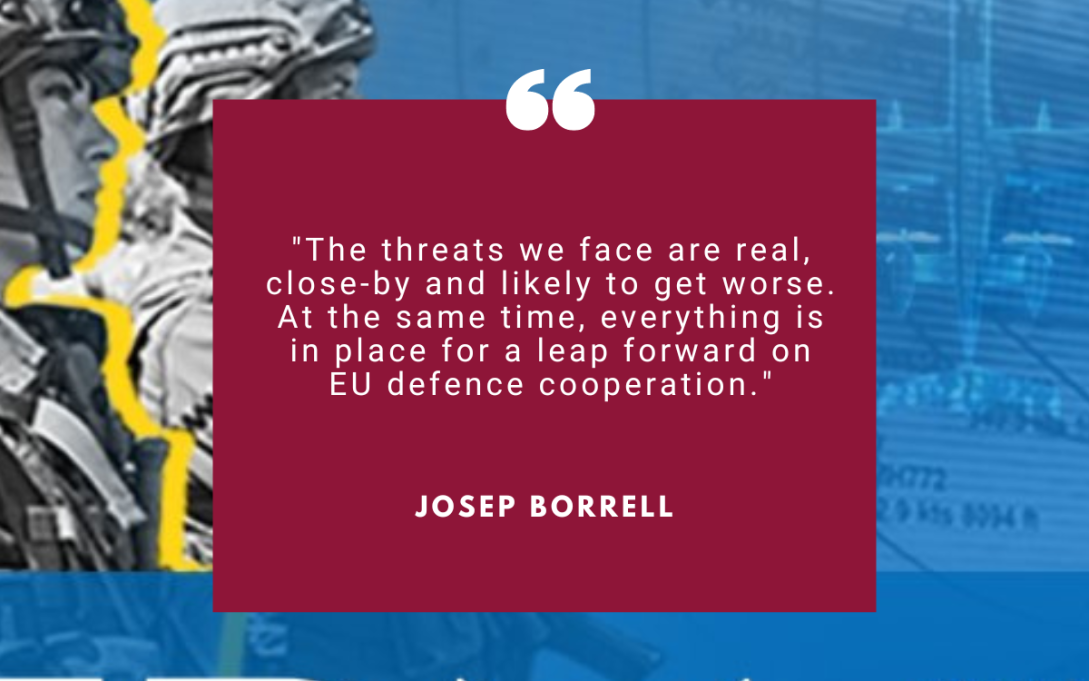
Our work on European security and defence is starting to show results. This week we had the annual conference of the European Defence Agency. The EDA is tasked to help EU member states to develop their military capacities in a more coordinated manner and to support defence research and industry. The overall goal is to get more defence capabilities and better value for money.
This week the EDA published two important documents: the Defence Data 2020-2021 report and the 2022 issue of the European Defence Matters review. Both documents are of crucial importance to understand the European defence landscape and the current geopolitical situation has given them more importance
Naturally, the starting point of our discussion was Russia’s war against Ukraine, a frontal attack on a peaceful neighbour. I stressed the importance of our support to Ukraine, politically, economically and militarily, meaning with weapons and training, so they can push out the invader, as they are. And we should be able to do this as long as necessary, until Ukraine prevails.
This war has also been a wake-up call for all of us about our military capabilities. We have given weapons to Ukraine, but in so doing, we realised that our military stockpiles have been depleted. With conventional war returning to the heart of Europe, we also realised that we are lacking critical defence capabilities, to be able to protect ourselves from a higher level of threats on the European continent itself.
As I said in my speech, Europe is spending more on defence, and – to a certain extent - also better. How do we know? This is thanks to the EU defence data put together by the EDA. The EDA has been collecting defence data on an annual basis since 2006 and it is the best available overview of the evolution of EU armies’ capabilities.
These data are worth analysing as they tell us a lot – of what we have achieved but also of what we still need to do.
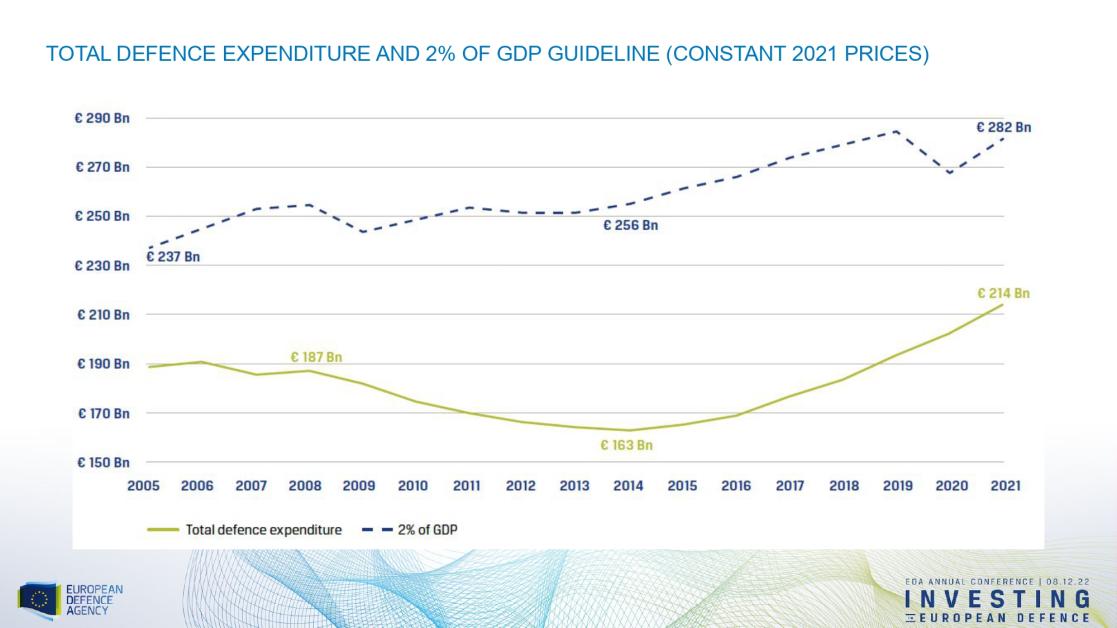
According to the EDA’s data, defence spending within the EU grew in 2021 to €214 billion. This is a 6% increase compared to 2020 – and the strongest yearly growth rate since 2015. But we are still far away from the 2% NATO benchmark.
And there are big differences among member states Overall, member states spend on average 1.5% of their GDP on defence. Five of our member states increased defence spending by 20% or more last year; and one of them increased by 42%.
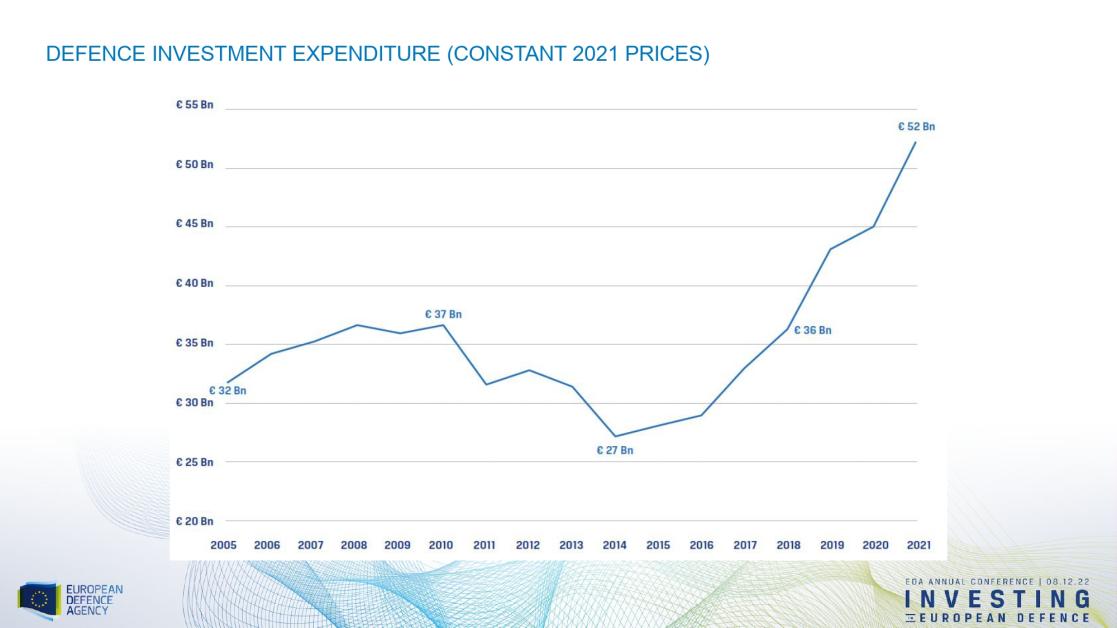
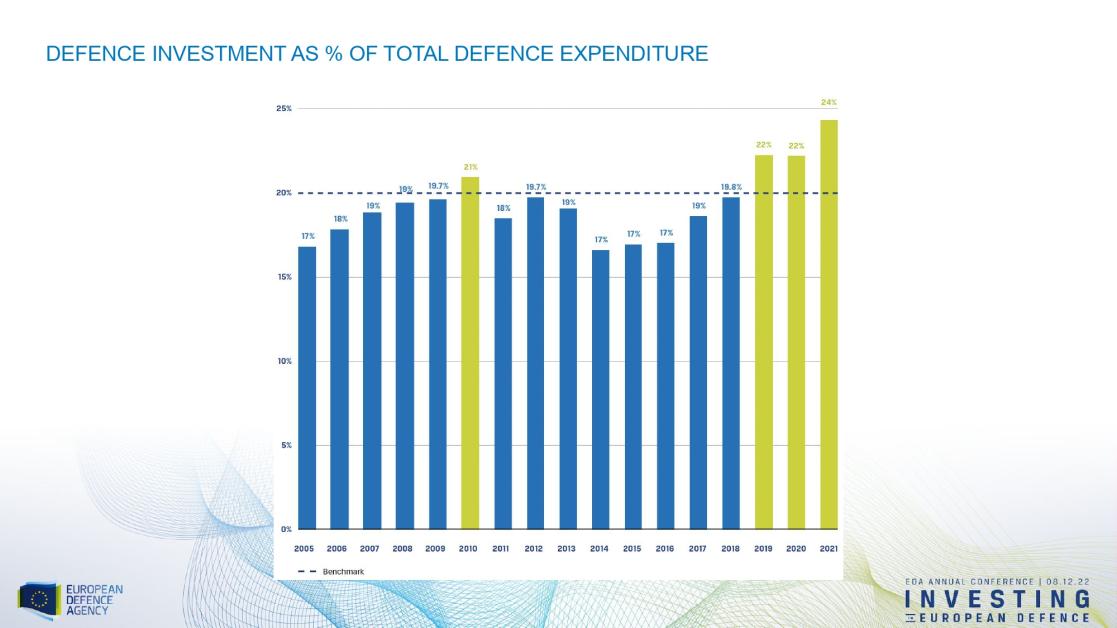
Money matters but a financial figure alone is not enough to know what this means in terms of available defence capabilities. Financial resources are needed, but you do not fight wars with bank notes. There is a long way between allocating money and developing physical and human operational capabilities.
It is good that the EDA reports show that last year, we saw a record level of defence investments: €52 billion, which is 24% of total defence expenditure. For the third year in a row, we collectively met and exceeded the agreed benchmark of 20%. Indeed, 19 member states achieved this benchmark, the highest number since EDA started collecting data and 5 more countries than in 2020.
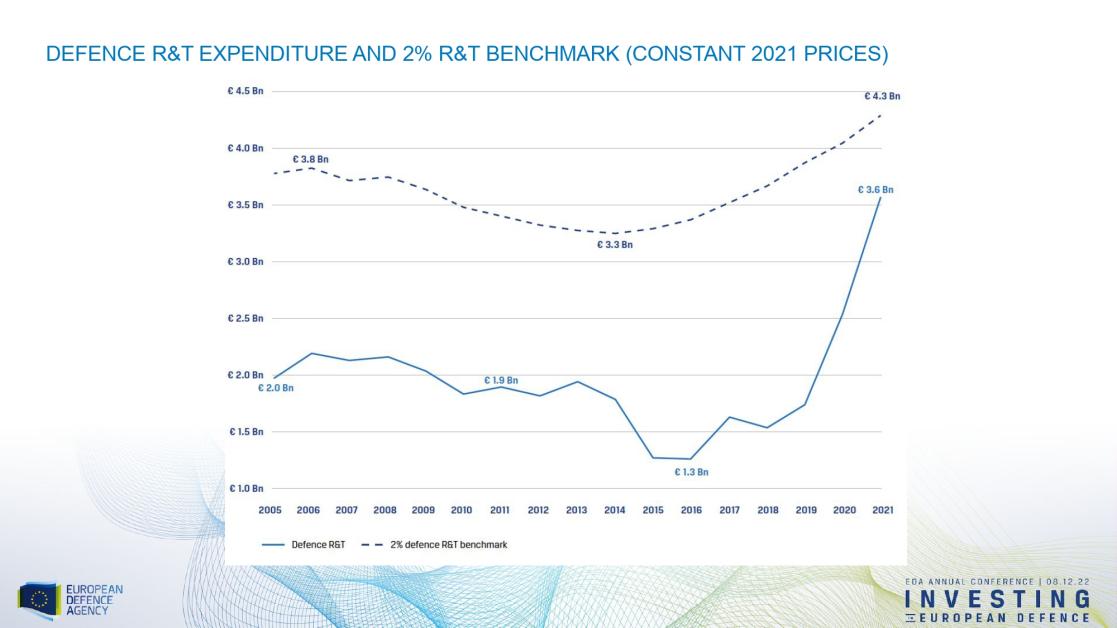
When it comes to spending on Defence Research & Technology, we also have good news, with a rise to €3.6 billion, a 41% increase compared to last year. It almost tripled compared to the historic low of 2016.
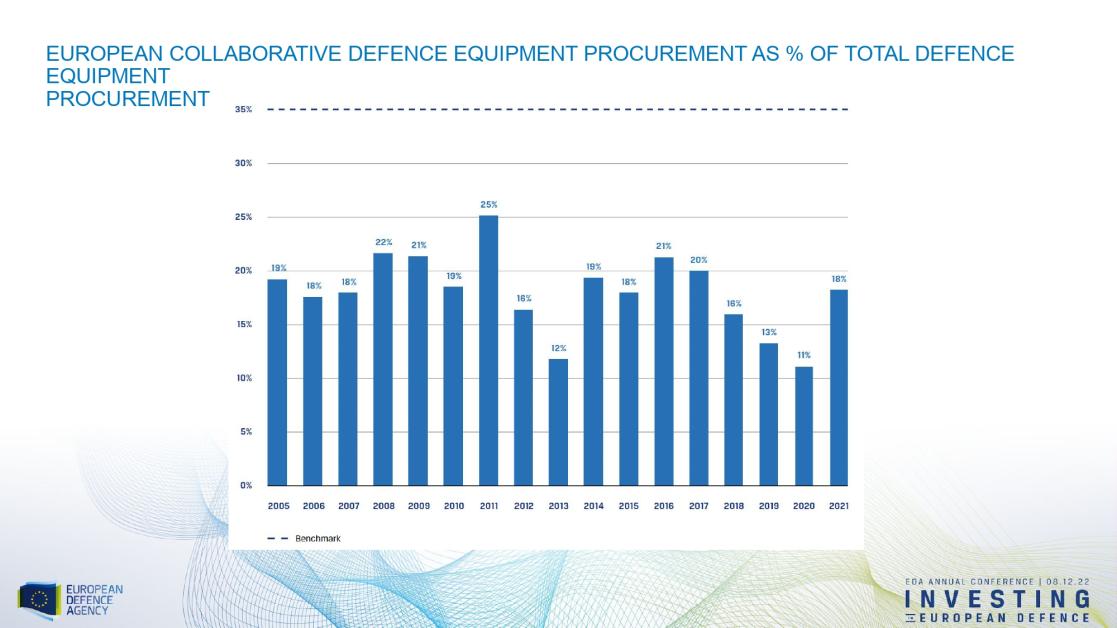
But there is another, less positive side too when we look at defence cooperation. Collaborative defence equipment procurement in 2021 amounted to € 7,9 billion, which represents 18% of total spending in equipment procurement. This is a significant increase compared to 11% in 2020, but we are still far below the agreed benchmark of 35%.
Buying and investing more together
So, these figures are telling us that we are doing better, but not enough, especially when it comes to cooperation. As ever, the question is what we can do about this.
First, we need to address short-term needs by investing and procuring more jointly. Put simply: buying more together. More than 10 months of war and of support to Ukraine have exposed the inadequacy of our stockpiles and the fragility of our supply chains.
In May, we presented a defence investment gaps analysis. Since then, the Joint Procurement Task Force (EDA, EEAS, and Commission) has been working with member states to aggregate their needs and identify realistic opportunities for joint procurement, for both ammunitions and equipment.
Now, we are in the next phase. Together with Commissioner Breton, we have reached out to the defence industry, asking relevant companies to provide information on their production capacity. To help European defence industry ramp up its production capacity, the Commission has also proposed a new EU Instrument – EDIRPA - to facilitate and incentivise joint procurement with € 500 million for 2022-24. We hear there are very concrete intentions by member states to procure jointly. But these intentions need to be translated into acquisition orders, sooner rather than later. Fine words are not enough.
Second, we must look ahead and face future threats. We have said it many times before: Europe needs to take more responsibility for its own security. To achieve this, we need to cooperate more to equip ourselves with the defence capabilities we need. The 2022 Coordinated Annual Review on Defence (CARD) report shows that less than 20% of all investment in defence programmes is conducted in cooperation. Sadly, defence cooperation remains the exception rather than the rule.
To prevent fragmentation and improve coherence, member states should design their national plans with an EU outlook. And they must systematically plan and develop capabilities in cooperation. CARD can help, as it identifies concrete collaborative opportunities. More than 100 have been identified so far, covering all domains.
The CARD report did not get enough attention in the past. It must now be the compass to guide the necessary joint development efforts. But to implement this kind of coordination, we need concrete tools and use community funding, to facilitate the interaction between member state demand and the industrial supplies.
And we have them. We have PESCO and the European Defence Fund (EDF) as important key EU initiatives to foster defence cooperation. The Commission has allocated €1.2 billion to a first batch of 61 projects under the EDF for collaborative defence research and development. These include for example next generation of fighter aircraft, armoured vehicles and ships, as well as critical defence technologies in the areas of space, cyber, military cloud or Artificial Intelligence. It is important that the CARD findings and the EDF allocation of resources go hand in hand.
Preparing for the future
I have previously likened Europe’s armies to Japanese bonsai trees, to make the point that since the 2008 financial crisis we have shrunk our forces to miniature versions, and we have done so without any coordination. We cannot afford to repeat the mistakes of the past.
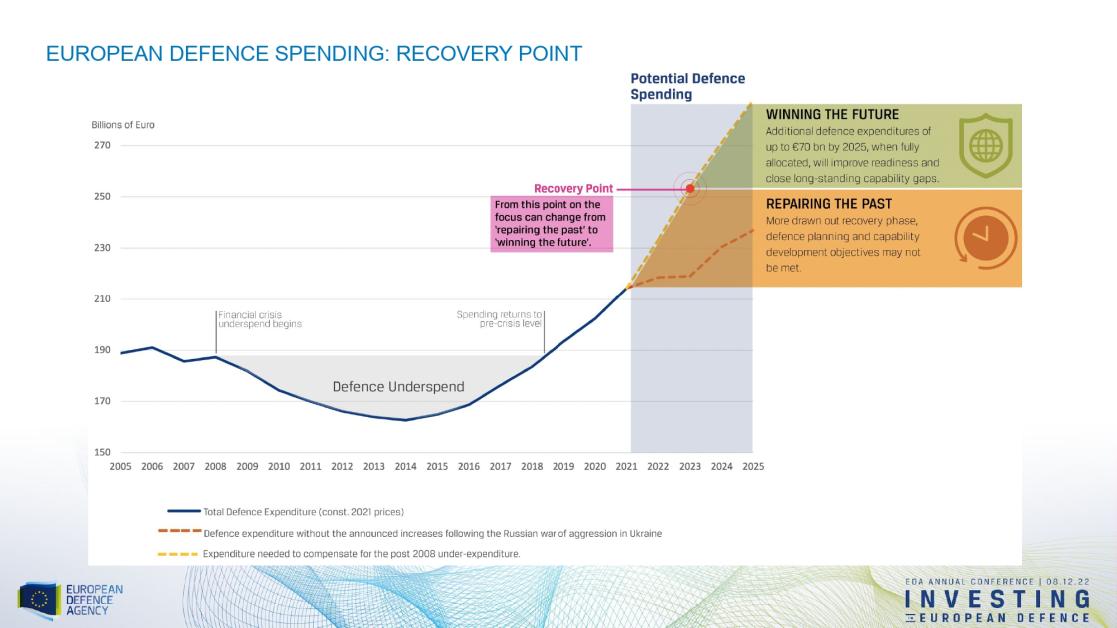
If you look at the graph above, you can see that we are now at a turning point. Next year we should reach the “recovery point”. This is when we will have compensated years of underspending and will be able to shift the focus from repairing the past to start winning the future.
If all announced spending increases are implemented, total EU defence expenditure will grow by another €70 billion by 2025. It is important to date any announced effort on military spending. How much doesn’t make a lot of sense if you do not say when it is going to happen. This is especially true in the troubled times we live, when we have a real sense of urgency.
Still, these plans are an enormous opportunity. But not if the money is spent in an uncoordinated manner, or if national decisions focus only on present needs relying on “off-the-shelf acquisitions”. This would perpetuate the fragmented EU capability landscape. So, we need the right balance between repairing the underspending of the past, responding to the present needs, but also preparing for the future.
The overall conclusions are clear and this is the message I will bring to European leaders at the EU Summit next week:
The threats we face are real, close-by and likely to get worse. At the same time, everything is in place for a leap forward on defence cooperation: we have the ideas, the money, the EU frameworks and an organisation, the EDA, specifically set up as a forum to boost defence cooperation. We need action and this requires a political push from the top, i.e. EU Presidents and Prime Ministers.
We should not just spend more on defence but better. And this means cooperate more. To continue supporting Ukraine; to address present needs; and to start preparing for the future.
MORE FROM THE BLOG

“A Window on the World” – by HR/VP Josep Borrell
Blog by Josep Borrell on his activities and European foreign policy. You can also find here interviews, op-eds, selected speeches and videos.
